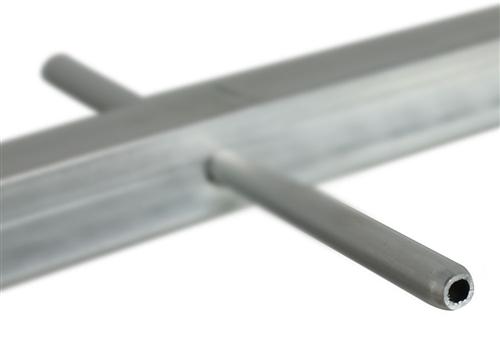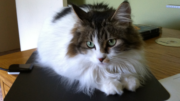Well, it’s this. The thing you see above you in this article. It’s a post at the front of antenna. Although they’re not 100% the same, a passive radiator in the antenna world can be thought of as another word for a director. They are parts of an antenna that essentially help focus the signal on a particular point.
The hidden truth about antennas
This brings up the fact that on a lot of antennas you see, the actual “driven element,” in other words the part that actually receives the signal, is quite small. It is usually found in the middle of the antenna. There’s a lot of metal surrounding it that isn’t connected to the driven element at all, and this may lead you to think that a lot of the metal on an antenna is just for show. That couldn’t be further from the truth.
Why is it called that?
The posts on the front of the antenna, before the driven element, help send more signal toward that driven element by “passively radiating.” In other words, the signal gets intercepted and essentially pointed in one direction rather than bouncing all around. You can say this another way: radiators improve “the beam’s directionality.” This has a negative side effect as well– the antenna becomes able to see only a narrower portion of the sky. However, the part it does see has stronger signals.
This is all part of the design of a Yagi antenna, where elements are arranged in such a way to maximize reception. We call elements that connect directly to your antenna cable “active” while we call all the others “passive.” Put together, they form an antenna that plucks the tiniest and weakest signals out of the air from dozens of miles away.
How does this stuff work?
Many explainers and textbooks say that things like radiators, reflectors, and directors act the same way that lenses and mirrors do. But lenses and mirrors are solid, not just chunks of metal. It doesn’t make sense to the average person how this could all work.
The thing you need to realize is that radio waves are big. Really big, compared to waves of light. The broadcast signals that bring us our TV and radio range from a few inches to about 15 feet in size. Yes really. Light waves are tiny, a few small fractions of a millimeter. So in order to make them move where you want, you need highly polished surfaces. Otherwise the light will scatter and bounce around. On the other hand with radio waves it’s a lot easier to redirect them because they are just so big. A few well-placed pieces of metal will do it. And that’s the basis of the multi-element antennas we use today.
What now?
Yes, it does sort of seem like I’m talking in circles here, because it’s hard to define one part of an antenna without defining the others. That’s why it’s better off, assuming you’re not shooting for an engineering degree, to talk about what a passive radiator does for the overall design of the antenna, rather than talking about the complex physics that make it work.
So, here’s the bottom line — a passive radiator focuses signal on one point. That point is where the active part of the antenna is, and the more signal it gets, the better your reception is. Simple as that.
Get the antenna you need from Solid Signal
SolidSignal.com is your source for antennas. Shop at Solid Signal for everything you need to live your best digital life. You’ll find everything you need from the smallest connector to the largest tower. It’s all there, along with free tech support and even support before the sale. You can’t say that about every electronic retailer, that’s for sure!





